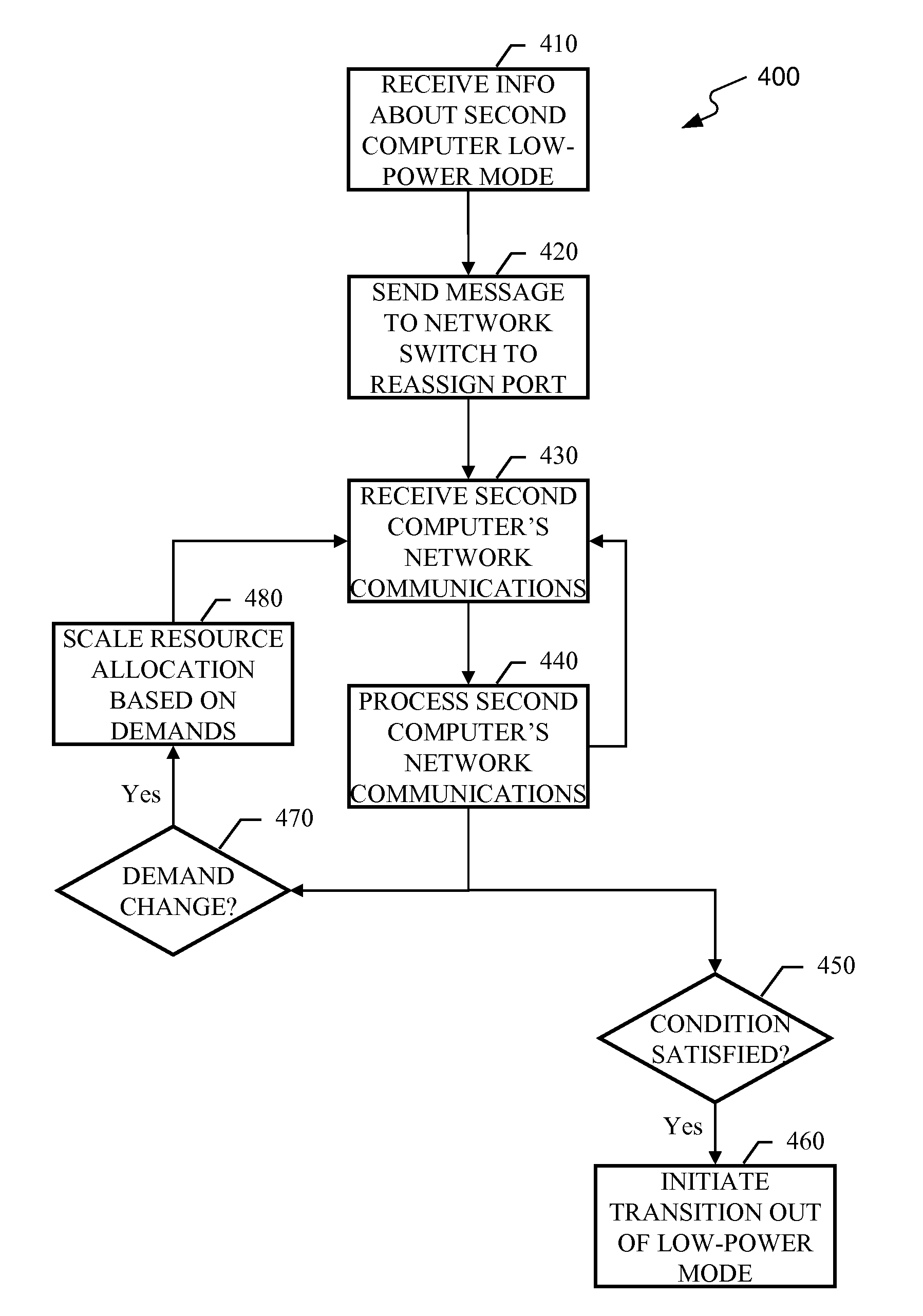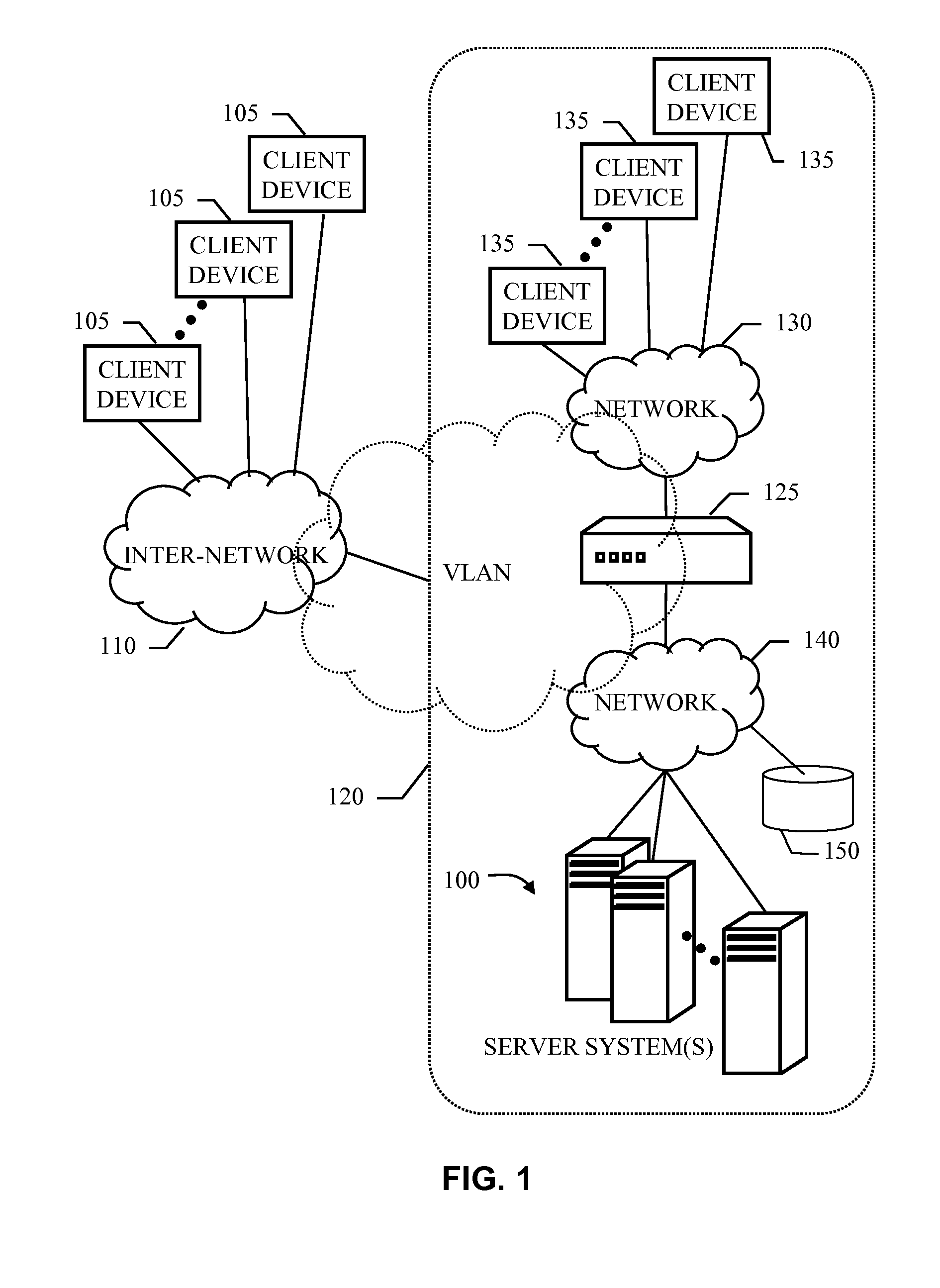Architecture to enable energy savings in networked computers
a networked computer and energy saving technology, applied in data switching networks, instruments, high-level techniques, etc., can solve the problems of short battery life and increase energy bills, and achieve the effects of saving substantial energy, facilitating large-scale network implementation, and saving substantial power
- Summary
- Abstract
- Description
- Claims
- Application Information
AI Technical Summary
Benefits of technology
Problems solved by technology
Method used
Image
Examples
Embodiment Construction
ON OF THE DRAWINGS
[0023]These and other aspects will now be described in detail with reference to the following drawings.
[0024]FIG. 1 is a block diagram showing an example of system(s) and an operational environment that permit computers to remain accessible while in a low-power mode.
[0025]FIG. 2 is a block diagram showing an example of data processing apparatus used to manage the sleep mode(s) of operation of computers on a network.
[0026]FIG. 3A is a block diagram showing an example of a sleep-server system.
[0027]FIG. 3B is a block diagram showing an example of a sleep-server.
[0028]FIG. 4 is a flow chart showing an example of a low-power mode computer management process.
[0029]FIG. 5 is a flow chart showing another example of a low-power mode computer management process.
[0030]Like reference symbols in the various drawings indicate like elements.
DETAILED DESCRIPTION
[0031]This application describes systems and techniques that permit computers to remain accessible while in a low-power ...
PUM
 Login to View More
Login to View More Abstract
Description
Claims
Application Information
 Login to View More
Login to View More - R&D
- Intellectual Property
- Life Sciences
- Materials
- Tech Scout
- Unparalleled Data Quality
- Higher Quality Content
- 60% Fewer Hallucinations
Browse by: Latest US Patents, China's latest patents, Technical Efficacy Thesaurus, Application Domain, Technology Topic, Popular Technical Reports.
© 2025 PatSnap. All rights reserved.Legal|Privacy policy|Modern Slavery Act Transparency Statement|Sitemap|About US| Contact US: help@patsnap.com



